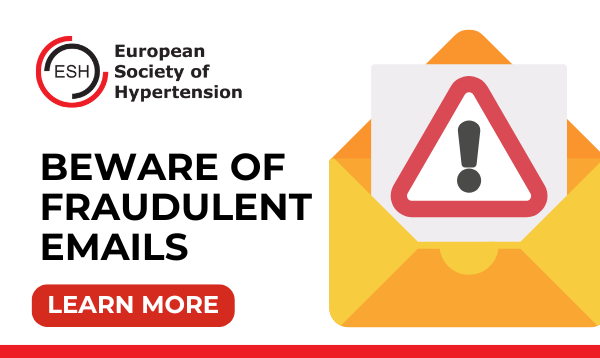Hypertension 2008
Targeting BP Requires Targeting Inertia
Hypertension is not well-controlled in Europe. According to the ESH, blood pressure (BP) control rates range from a low of 12% in Poland to about one-third in France, Greece, and Spain. When 1,413 hypertensive patients in the Control-Project study in Spain continued to have uncontrolled BP despite treatment, their primary care physicians were asked the reasons for inadequate BP control; poor patient compliance and a lack of drug efficacy were the most common responses, with smaller numbers of physicians citing other factors.
Yet, a very different picture emerged in the attitudes of physicians treating 1,850 uncontrolled hypertensive patients. Among the general practice physicians in Spain treating these patients, treatment modification was used on only 15.4% of patients, including a change of medication, a dose increase, or the addition of one more drugs. However, for 84.6%, the clinician’s action was no action at all: no therapeutic modification was initiated to get these patients BP controlled.
Prof. Sverre E. Kjeldsen, University of Oslo (Norway), noted that patients in randomized clinical trials are far more likely to reach BP targets: 40% to 60% versus 20% to 30% in regular clinical practice. Yet, why don’t even a larger fraction of patients in clinical trials reach their targets? Could physician inertia have an equivalent in study settings: investigator inertia?
Dr. Kjeldsen was first author of the LIFE study comparing the effects of
losartan with atenolol on the reduction of cardiovascular complications in patients (n = 9,194) with essential hypertension and with documented left ventricular hypertrophy. He and his colleagues have analyzed the data to try to determine why systolic BP (SBP) leveled off after about 6 months of blinded treatment. They found many patients with SBP >140 mm Hg who remained on their initial dose and were not uptitrated by their investigator. They concluded that no reason except for investigator inertia could be found for the leveling off of study BP.
Such inertia could be found among the ASCOT trial data, too. Over time, fewer and fewer trial participants hadnot reached target diastolic BP, ranging from 44% at 6 months to 28% at 4 years. For those who were not on target, approximately one-fourth to one-third of them remained at their initial dose titration level. Again, Dr. Kjeldsen said, no specific reason could be determined except for investigator inertia.
Targeted BP: An Achievable Goal?
At baseline, only 22% of patients in the VALUE trial had controlled hypertension despite previous treatment in 92% of them. At the end of the study, 58% of patients on the valsartan-based regimen and 63% of patients on the amlodipine-based regimen had controlled SBP. In evaluating drug titration across 24 months of the VALUE trial, 39.7% of patients remained on monotherapy during the course of the trial, yet nearly one-third of these individuals did not have their BP controlled.
In an effort to apply basic rules of physics to the problem, Dr. Kjeldsen and other VALUE investigators launched the systolic blood pressure initiative to improve control rates through a series of educational and organizational efforts. Physics teaches that some interfering force is required to alter inertia. So, when declines in SBP leveled off at about 6 months, the VALUE lead investigators compiled a list of all individual patients whose systolic blood pressure was 10 mm Hg or more above goal, mailing it to lead physicians in each country. About 3 months after the initiative was undertaken, SBP levels began to show a further slow decline that continued to 30 months and was matched by an increase in blood pressure control rates that had also plateaued at about 6 months.
“Since most VALUE physicians and nurses work in general practice,” Dr. Kjeldsen said, “to an optimist these results suggest that with education and dedication, the systolic blood pressure control in the community could be much improved.”
Finally, the ACCOMPLISH trial showed exceptional control rates with initial combination therapy; about 80% of patients showed a BP <140/90 mm Hg at 30 months, which was more than double baseline control rates. Patients who did not reach targets tended to have more severe hypertension requiring more medication. Also, diabetics required more medication than non-diabetics. Still, investigator inertia played a role since many patients remained on monotherapy without explanation despite having not reached BP targets.
Trial interventions targeting uptitration and reaching BP targets – so-called “interventions in interventions” – do work, said Dr. Kjeldsen; they improve BP control and they prove the concept of inertia.






